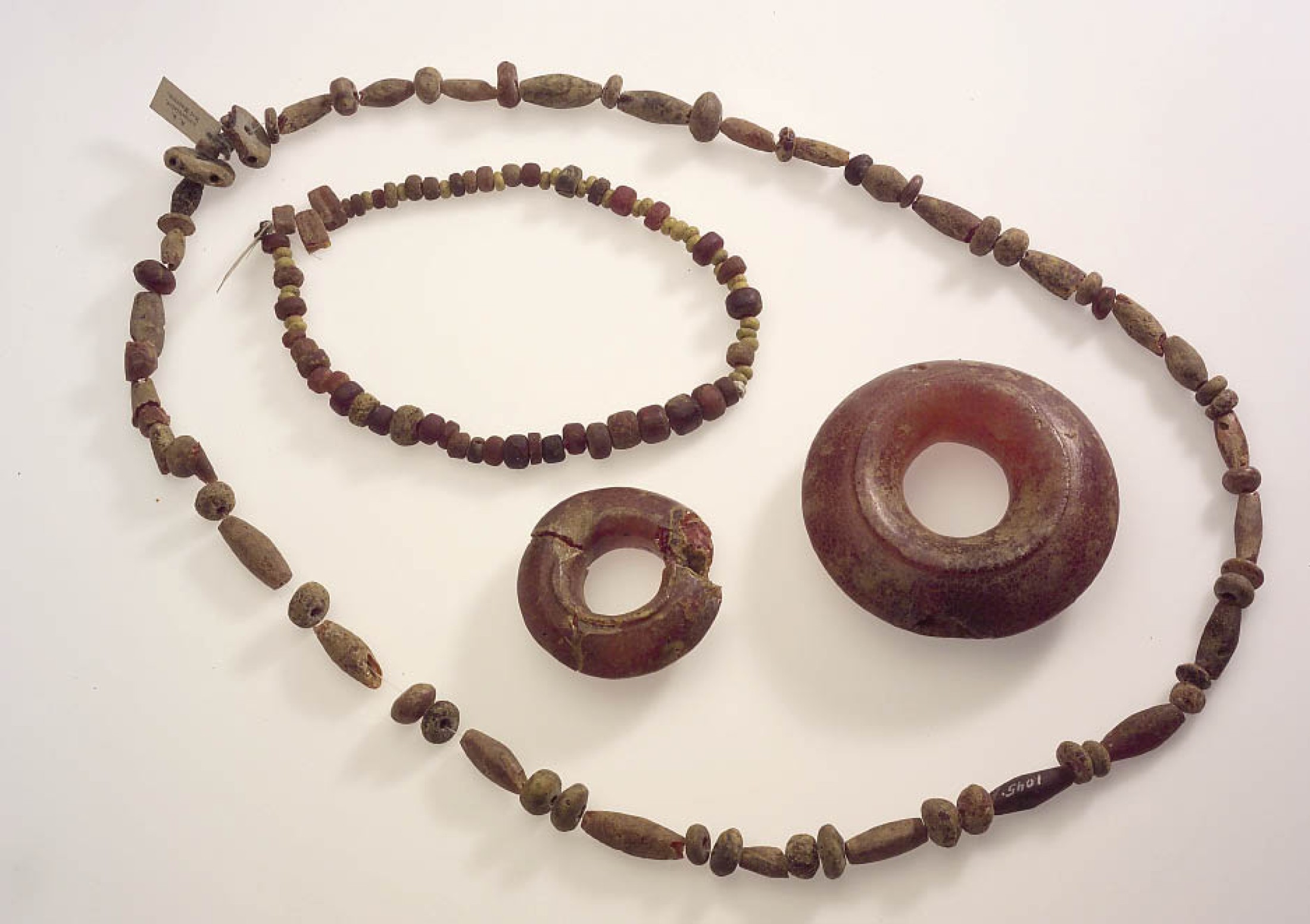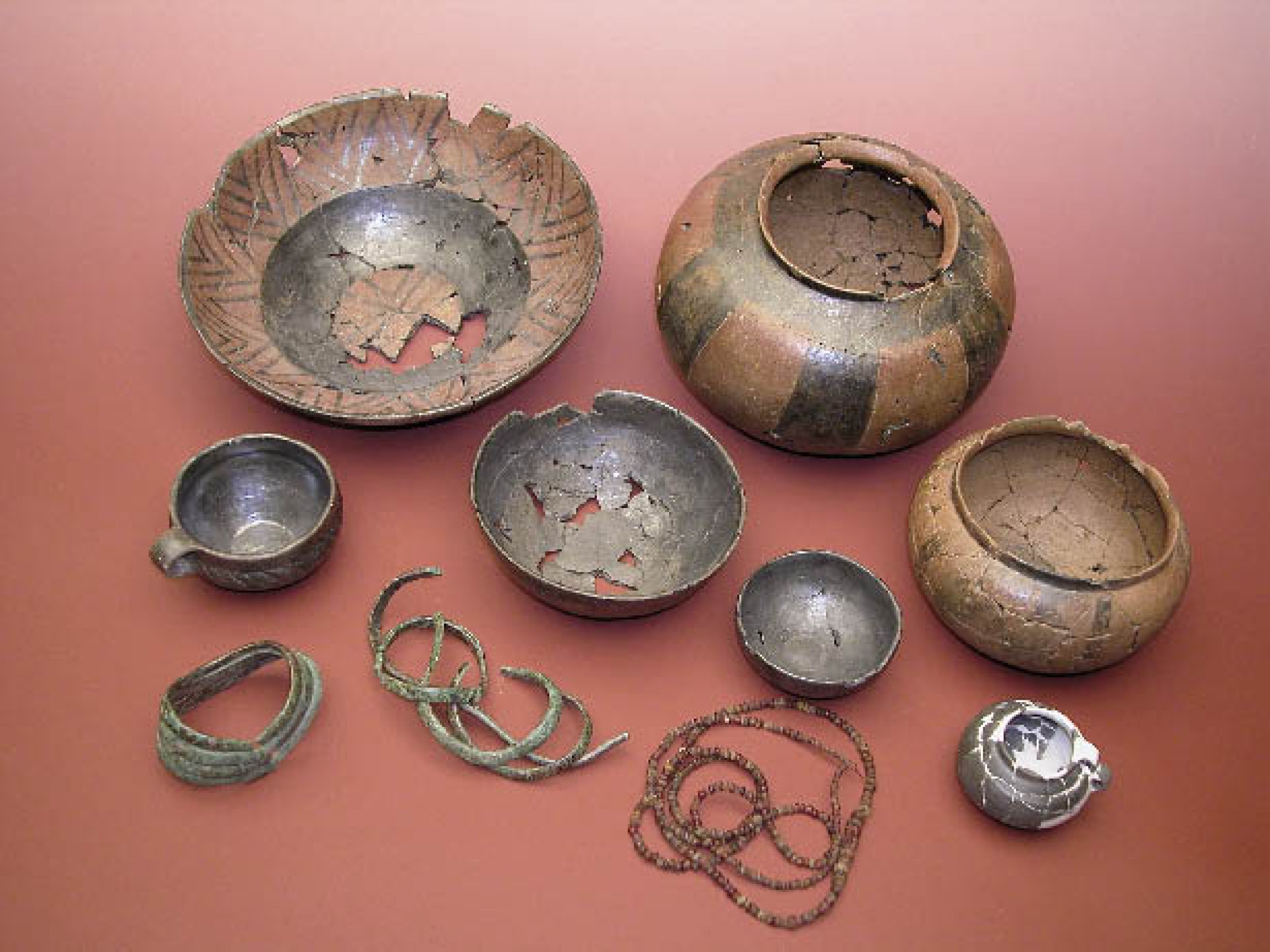Grave furnishings at the Hallstatt burial site
The Hallstatt cemetery is one of the most important prehistoric cemeteries in Europe, not only because of its size, but also because of the particularly rich and extraordinary grave furnishings. The grave goods are many and varied. The dead will mostly be given special jewellery, status symbols and food and drink to take with them into their graves; the many bowls and pots of sheet-bronze and pottery are therefore merely containers for the all important food.Vessels as burial gifts
Items worn by the deceased
Objects made of organic material
Vessels as burial gifts
The grave goods uncovered in the Hallstatt cemetery include many beautiful ceramics. These items are extremely difficult to recover, as they were partially compressed by the weight of the soil and broken into many pieces; in addition, the clay is heavily saturated and very soft. Over time, experts in the Vienna Natural History Museum have developed a method that makes it possible to safely recover, clean and reassemble these very special pots.First, the position of the potsherds is documented photographically. The pieces are then removed one by one from the grave, placed onto a plate according to their original position in the grave and fixed in this position. The plate is taken to the restoration workshops of the Department of Prehistory of the Natural History Museum, Vienna. After they have been slowly dried, the surfaces and edges of the sherds are cleaned by delicate sandblasting. The cleaned pieces are reassembled one by one.
Items worn by the deceased
In addition to the extra grave goods, almost all of the buried corpses wear some kind of accessories on their bodies, or such items are enclosed in the grave, among them hair pins and fibulae for women, cloak pins for men, and small iron knives for both sexes. The latter are almost always associated with meat, of which only animal bones have been preserved. In some cases, missing bones may suggest particularly fine pieces of meat.Objects made of organic material
In spite of a wealth of finds, we only have knowledge of a small fraction of the original grave goods. The decomposition of all organic materials has left only modest remains of the original offerings. We have to assume splendid garments, ribbons, leather straps, colourful cloth, objects and vessels made of wood, fine pieces of meat, various beverages, all of which will have decomposed in the soil within just a few decades of burial. Archaeologists are seldom granted insight into this lost organic world. Very special preservation conditions, such as those encountered in bogs low in oxygen (bog bodies), very dry and cold (‘Ötzi the Ice Man’), particularly wet (Roman boats) environments, or, of course, salt mines, provide more finds relating to everyday life than places yielding the usual durable and inorganic finds.(Kern, A.)





